Are you tired of your team feeling overwhelmed by inefficient workflows? Improving our processes not only boosts productivity but also enhances overall morale in the workplace. By streamlining tasks and embracing better communication practices, we can create an environment that fosters success and collaboration. Curious to discover some effective strategies for workflow improvement? Read on!
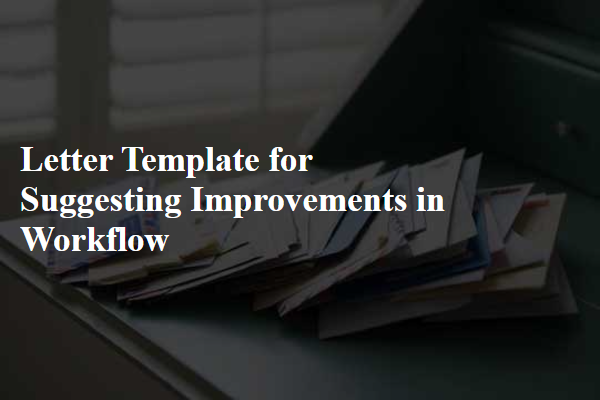
Clarity and specificity of suggestions.
Improving workflow efficiency can significantly enhance productivity in organizational settings. Clear guidelines outlining specific tasks, responsibilities, and deadlines are crucial for team members in any department, such as Marketing or Product Development. Implementing digital project management tools like Asana or Trello can streamline task assignments and monitoring across teams, ensuring transparency. Additionally, conducting regular feedback sessions enables staff to voice concerns and propose viable solutions, fostering a culture of continuous improvement. Standardizing processes, such as adopting a uniform file naming convention or documenting workflow procedures, minimizes confusion and accelerates new employee onboarding, ultimately leading to a more organized and responsive work environment.
Understanding of current workflow issues.
Efficient workflow management is critical for maximizing productivity in any organization. Identifying current workflow issues can reveal bottlenecks, such as communication gaps between teams or outdated software systems. For example, companies utilizing project management tools like Trello or Asana may experience inefficiencies if team members do not consistently update task statuses, leading to misunderstandings about progress. Additionally, excessive email correspondence can clutter communication and delay decision-making. Implementing solutions such as regular team check-ins or adopting more integrated collaboration platforms like Slack can streamline processes, clarify responsibilities, and accelerate project completion times. Recognizing these obstacles enables organizations to enhance operational efficiency and employee satisfaction.
Prioritization of proposed improvements.
Implementing a structured prioritization framework can significantly enhance workflow efficiency in organizational processes. Techniques such as the Eisenhower Matrix categorize tasks based on urgency and importance, enabling team members to focus on high-impact activities. Additionally, employing a weighted scoring model allows for evaluating proposed improvements against key performance indicators (KPIs) like cost savings and time reduction. Regular feedback loops should be established, involving team insights from weekly review meetings, ensuring ongoing alignment with strategic goals. Utilization of project management tools, specifically software like Trello or Asana, enhances visibility and accountability within project timelines. Comprehensive training sessions on these methodologies could ensure all employees are equipped with the necessary skills to adapt to improved workflows effectively.
Evidence or data supporting the need for change.
Inadequate workflow efficiency in the manufacturing sector can lead to significant operational delays and increased costs. Recent studies indicate that production lines operating below optimal performance levels can experience a 30% decrease in output, affecting overall profitability. For instance, a report from the Manufacturing Institute highlighted that outdated machinery, which accounted for nearly 40% of downtime in 2022, severely hindered productivity. Furthermore, implementing streamlined task management systems, such as lean manufacturing techniques, has resulted in an average 20% increase in productivity for companies that adopted these methodologies. In high-paced environments like automotive assembly plants, these improvements can translate into substantial financial gains, emphasizing the critical need for workflow enhancements.
Collaborative and positive tone.
Internal workflow efficiency critically impacts productivity and employee satisfaction. Contemporary teams, especially in digital work environments like Slack or Trello, can enhance communication by implementing regular check-ins, fostering transparency. Using project management tools with visual timelines aids in tracking progress (for example, Asana's Gantt charts). Moreover, encouraging feedback loops can significantly improve processes, as seen in companies like Google, which emphasize iterative development. Implementing these strategies can create a more engaged, proactive team atmosphere, ultimately driving project success and innovation.

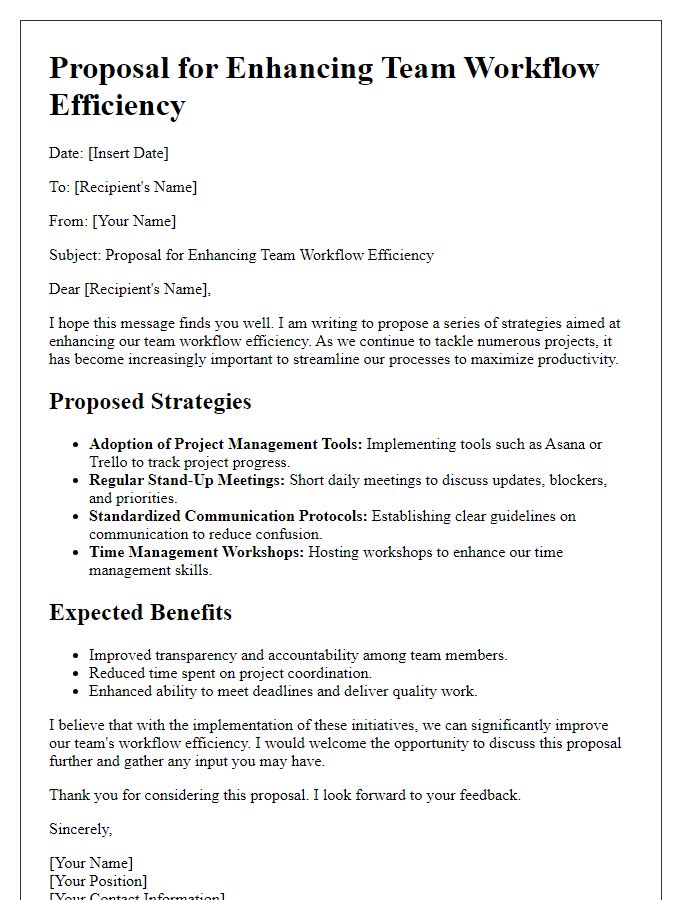
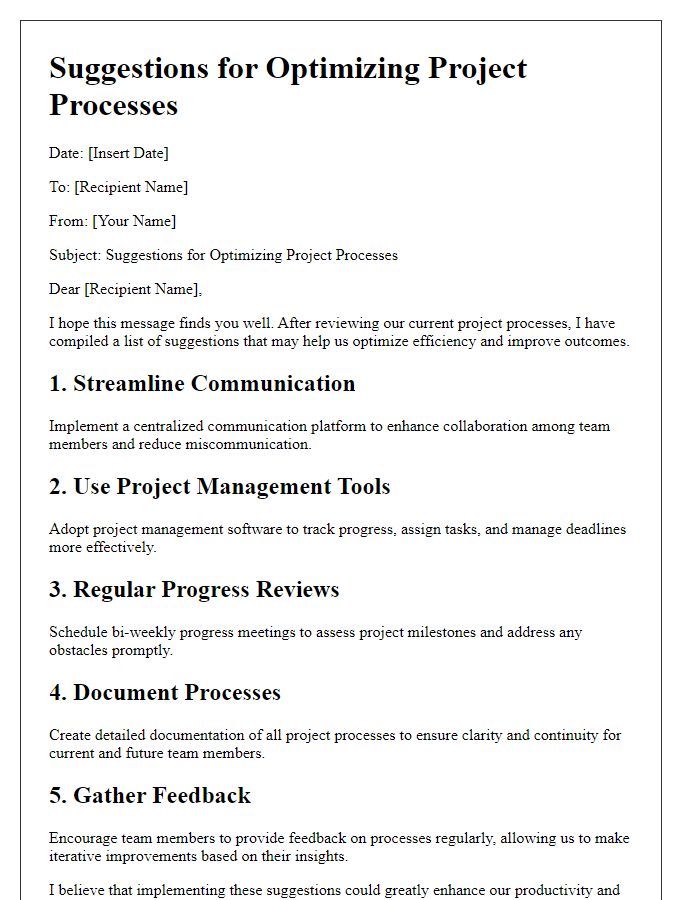
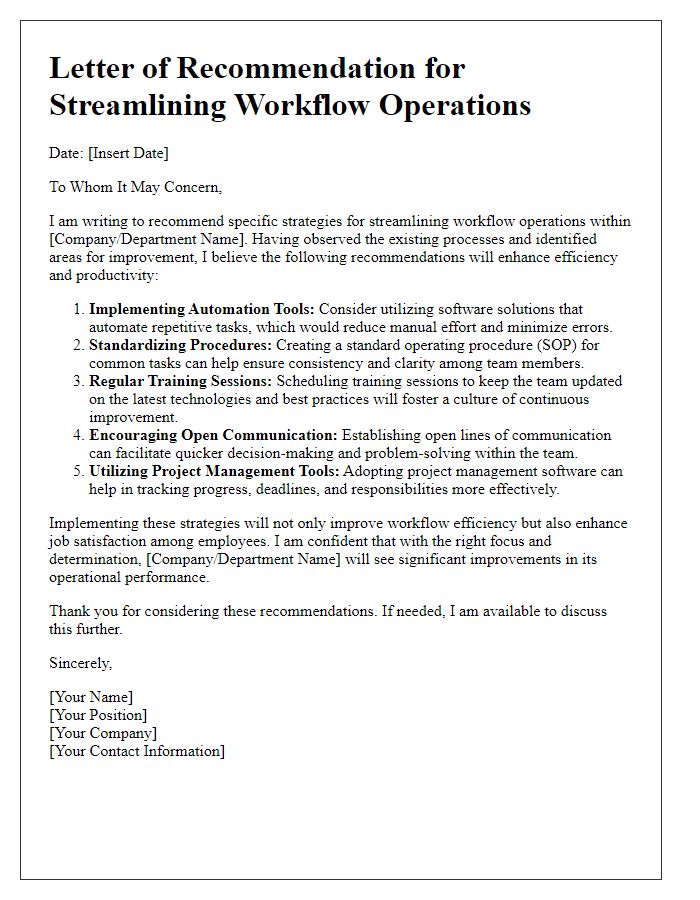
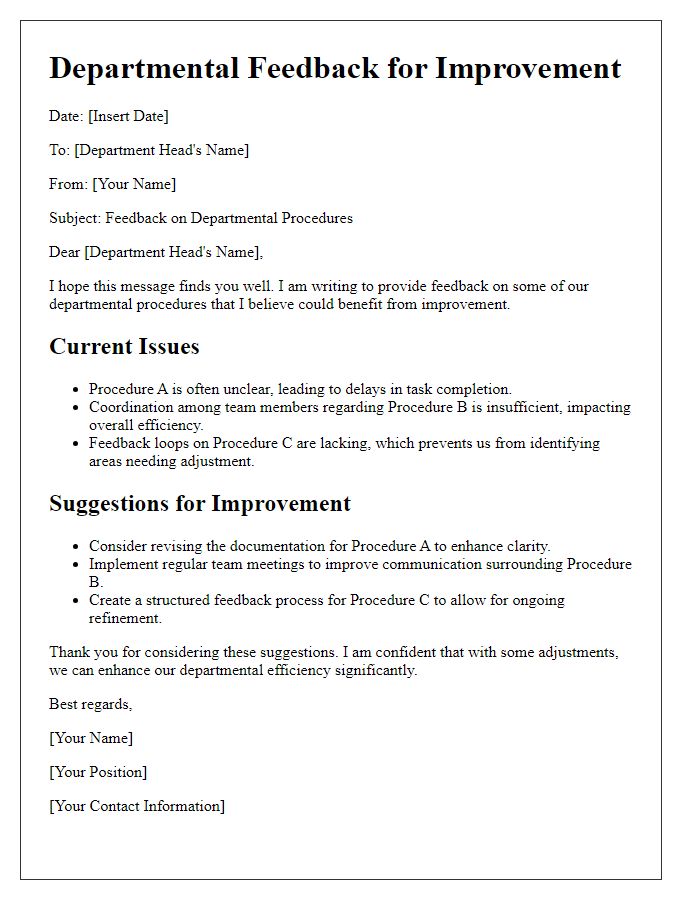
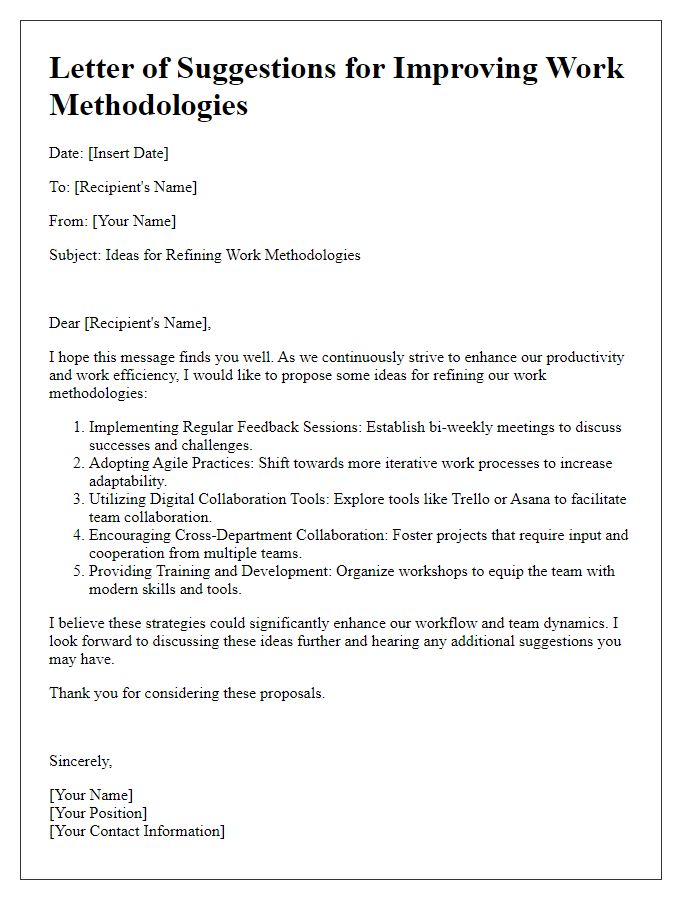
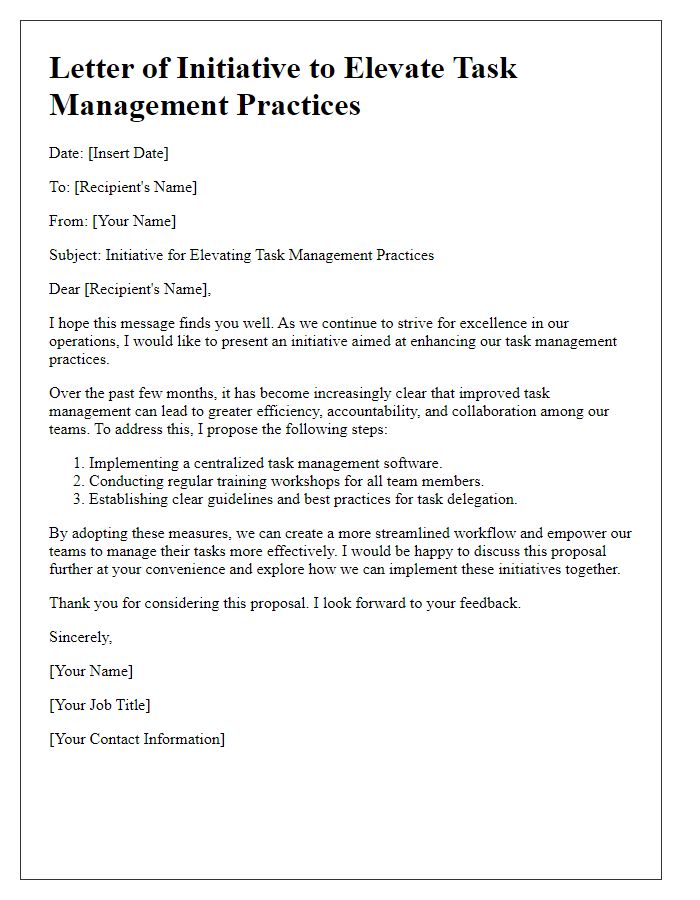
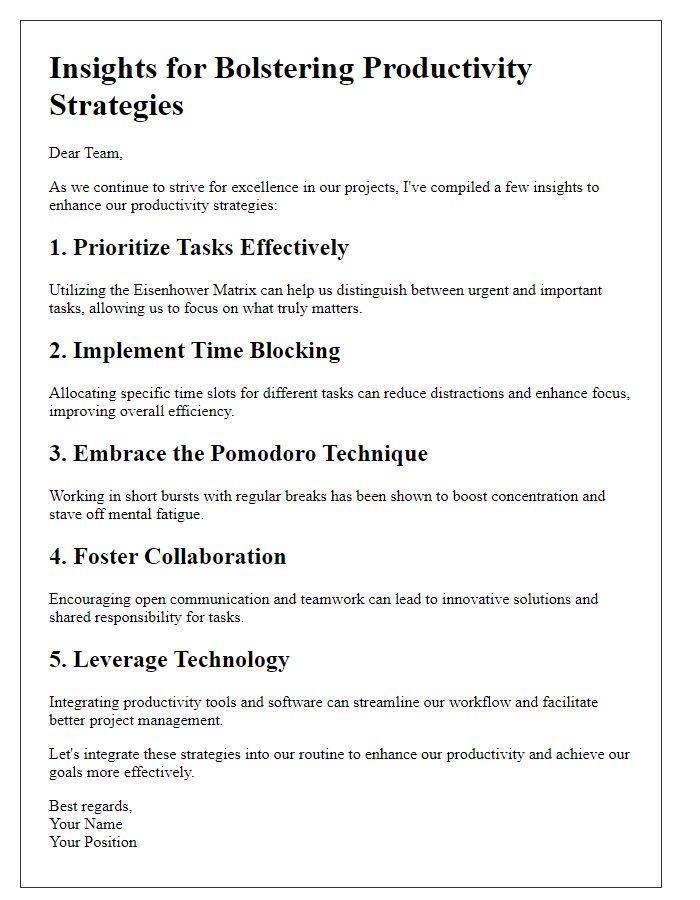
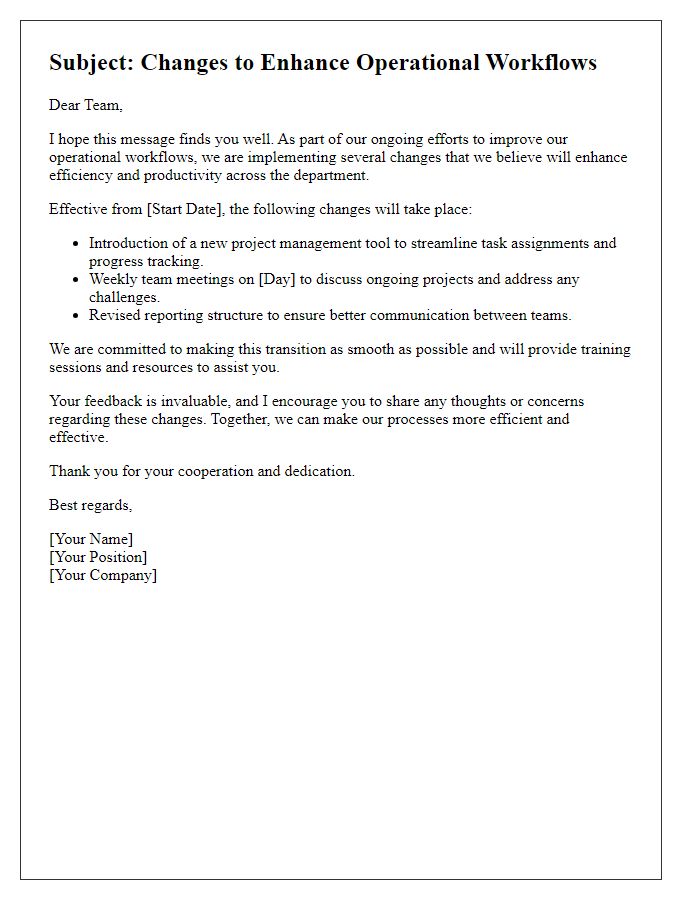
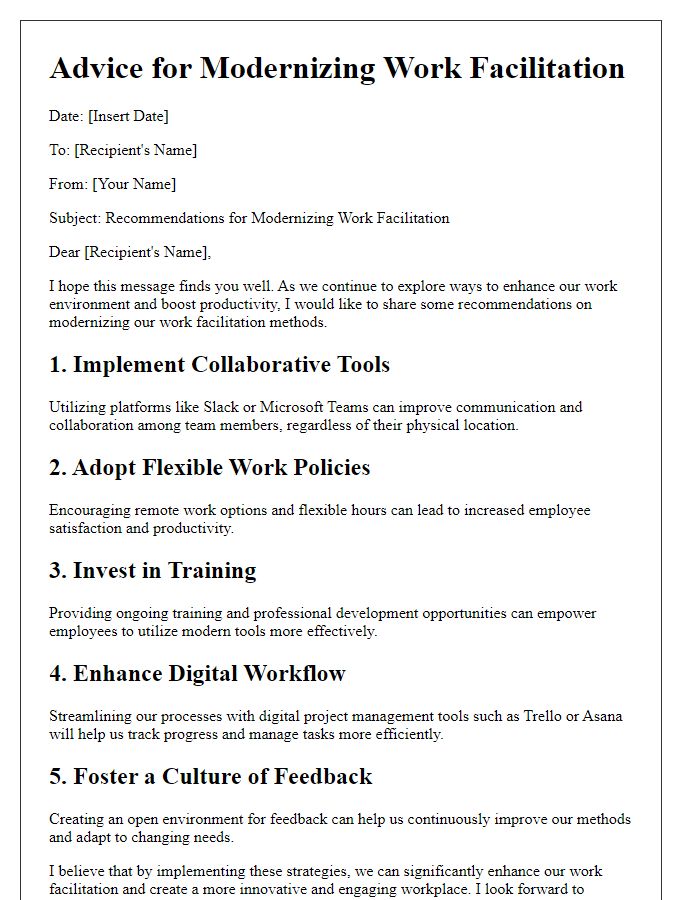
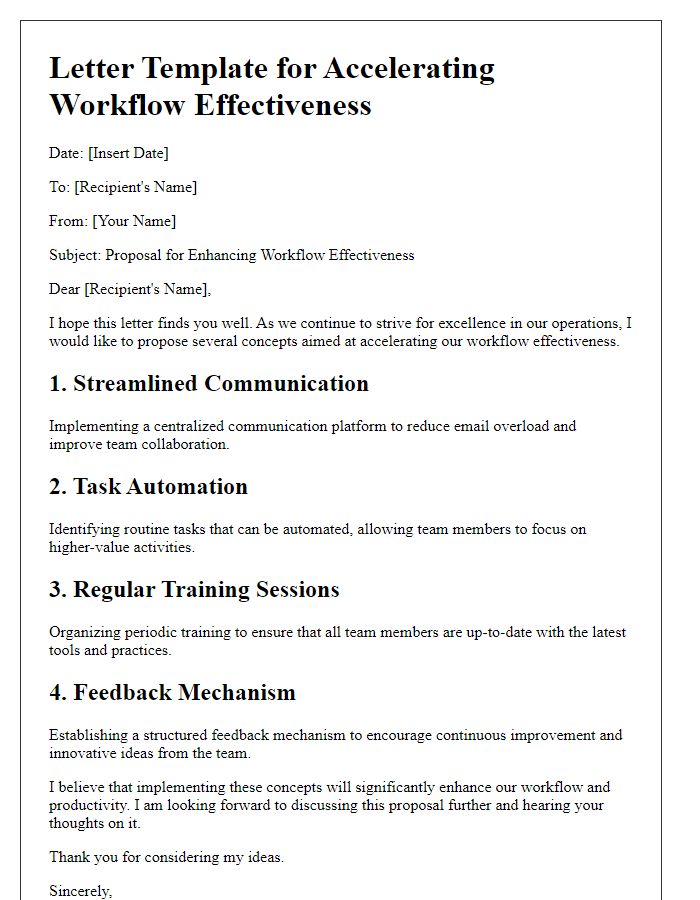


Comments